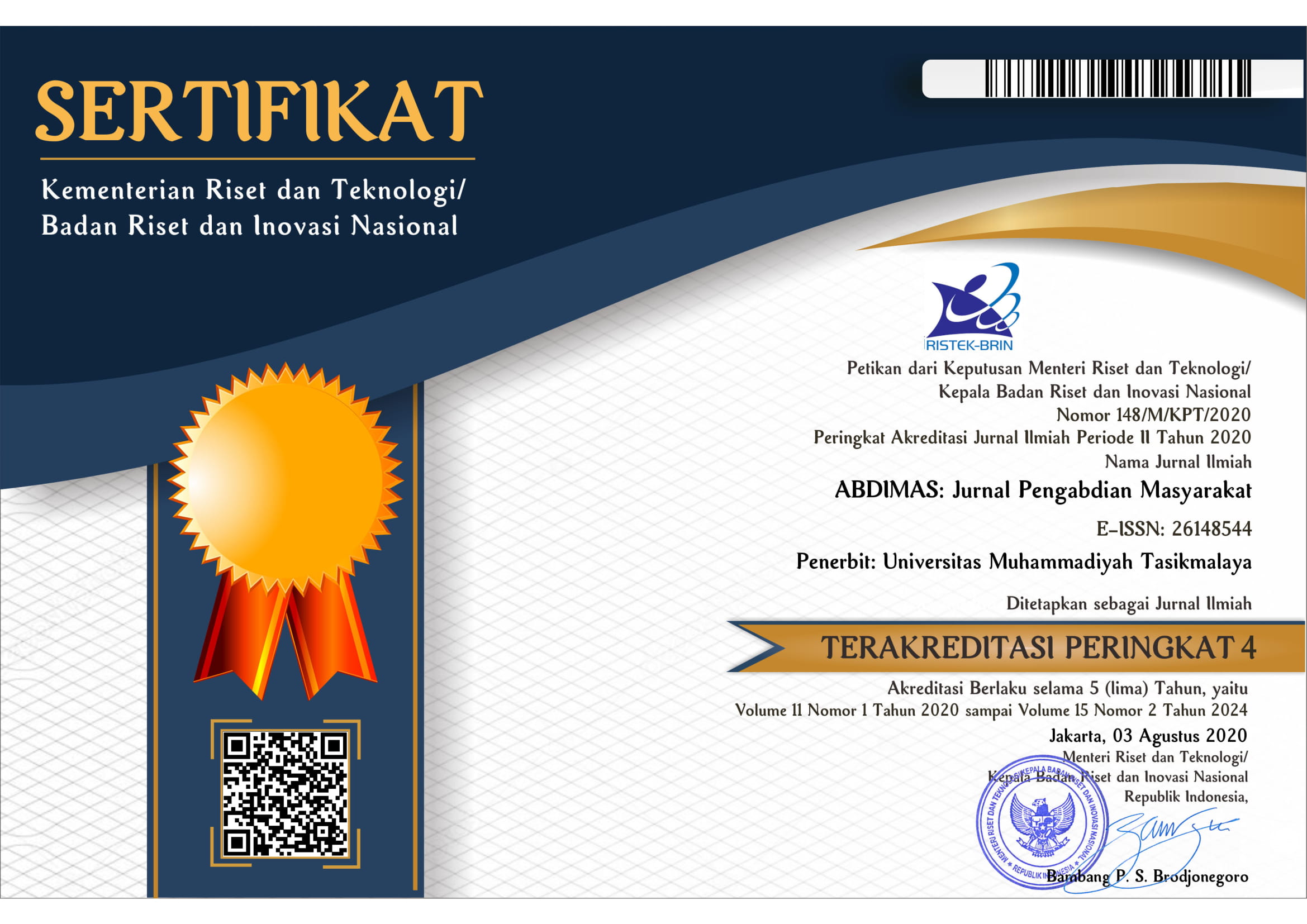Development of Accessories Business Product from Internal Tire Waste, in the Buttatianang area, Rappojawa Village, Tallo District, Makassar City
DOI:
https://doi.org/10.35568/abdimas.v6i1.3079Keywords:
Inner tube, Waste, AccessoriesAbstract
The Buttatianang community in the Rappojawa Village area generally complains about the large number of used inner tires found at the partner's retreading business in Rappojawa Village, which causes waste collection that is not useful and has an impact on protecting the waste ban. Processing waste into accessories requires expertise and creativity in processing this waste into useful products. Community potential is enhanced by providing opportunities and skills to increase family economic income. The implementation method is using Participatory Rural Appraisal (PRA). As a result of the implementation of training and skills activities, several product designs were obtained in the form of accessories for earrings, brooches, hijab fasteners, bracelets and various product accessories for mask straps. The product is packaged in a neater container, and looks attractive and unique, and invites consumer interest to buy. These products can be used as souvenirs for domestic tourists and international tourists. With the implementation of PKM activities by lecturers and students, so as to minimize waste reduction from retreading ban businesses.
Downloads
References
Asih Anna, Purwanti. 2015. “Peluang Usaha Ekonomi Kreatif Dari Ban Bekas Truk.”
Kompasiana.Com. 2015.
https://www.kompasiana.com/purwanti_asih_anna_levi/552ae7336ea834e334552cfd/menang
guk-untung-dari-ban-bekas-truk?page=all&page_images=3.
Kunusa, Wiwin, and Hendri Ibayu. 2020. “Pemberdayaan Masyarakat Desa Pangi Dalam
Pengolahan Limbah Organik Dan Anorganik.” ABDIMAS: Jurnal Pengabdian Masyarakat 3 (2):
–41. https://doi.org/10.35568/abdimas.v3i2.960.
Kurniadi, Steven. 2014. “Pemanfaatan Limbah Ban Dalam Bekas (Inner Tube Project).” Product
Design 3 (1): 180219.
Mokhtar, Nermin. 2016. “Use of Waste-Tire Materials in Architectural Application in Egypt.”
International Journal of ChemTech Research 99 (1212): 14–27.
http://www.sphinxsai.com/2016/ch_vol9_no12/abstracts/A(14-27)V9N12CT.pdf.
Rohana, R, S Syamsia, and A Syarif. 2022. “Pelatihan Pemanfaatan Limbah Dalam Perencanaan
Taman Ekowisata Di KTH Lamperangan.” … Seminar Nasional Kkn … 1: 51–58.
https://journal.unismuh.ac.id/index.php/kknmas/article/view/9131.
Samsudin, Asep Muhamad, Mohamad Djaeni, Idris, and Salman Fathoni. 2017. “Prosiding
Seminar Nasional Pengabdian Masyarkat “Kontribusi Pengabdian Kepada Masyarakat Dalam
Meningkatkan Cluster Perguruan Tinggi“.” Penerapan Teknologi Tray Dryer Pada Pengeringan
Dendeng Jantung Pisang Di Kelurahan Rowosari Kota Semarang, no. September: 31–37.
Satyagraha, Fauzi. 2018. “Pengaruh Penambahan Limbah Ban Dalam Bekas Kendaraan dan Filler
Limbah Karbit pada Laston (ac-bc) terhadap Karakteristik Marshall.” Yogyakarta.
https://eprints.uny.ac.id/62644/1/1. Fauzi Satyagraha 15510134030 A-.pdf.
Windiasty, Ananda Dea. 2019. “Pemanfaatan Limbah Ban Bekas Untuk Menunjang Perekonomian
Masyarakat.














